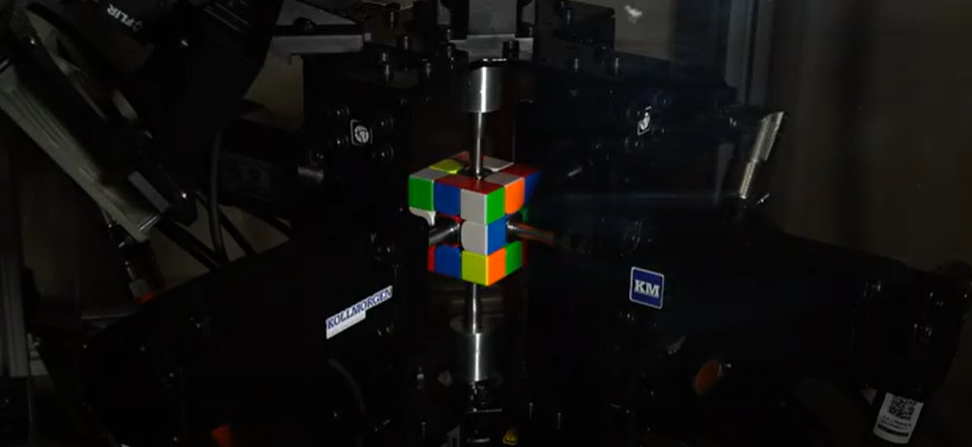- A robot beat the fastest time for a Rubik’s Cube to be solved by a robot
- The robot solved the cube in 103 milliseconds
- Its fast solving ability earned it the Guinness World Records title

An amazing team of university students built a robot that just beat the record for the fastest solving of a Rubik’s Cube by a robot. The students and their robot earned a Guinness World Record.
Their robot solved the Rubik’s Cube in 103 milliseconds!
Read more: Did Samsung Use A Robotic Rear to Test Smartphones?
They are from Purdue University in West Lafayette, Indiana. The team of students is part of Purdue’s Elmore Family School of Electrical and Computer Engineering.
But the men did not know each other before. In fact, they met through a co-op programme at the school and teamed up.
Afterwards, they created their cutely named robot Purdubik’s Cube.
See the story here.
How was the Rubik’s Cube solving robot made?
Of course, the programme brought the young men together to create Purdubik’s.
Now, you can finally see the students talk here and see Purdubik in all their robotic glory.
In the group are Junpei Ota, Matthew Patrohay, Aden Hurd, and Alex Berta.
To Purdue’s YouTube channel, Patrohay said, “Basically, we are a world record holder, the current world record holder for the fastest machine to solve a Rubik’s Cube. We currently have a time of 103 milliseconds, and we can very reliably solve under the current world record of 305 milliseconds”.
As Partrohay explained, engineers at Mitsubishi set the previous world record in 2024 with a robot that completed the task in 305 milliseconds.

Patrohay also tells the audience that their robot is faster than the time it takes a human to blink. If you’re wondering, it’s 200 to 300 milliseconds.
Furthermore, Patrohay says their robot solves the cube before you even realize it, and the only limitation “at this point” is the cubes.
Previously, the issue with the cubes was that they “snap in half” and “disintegrate,” according to Partrohay. However, they solved the problem through mechanical engineering by designing a “custom internal core” to hold the pieces together securely.
Explaining how they achieved this, Partrohay said they used knowledge from their undergraduate degrees to get to this point.
The building process
After meeting at the co-op programme, the students became friends and settled on the collaboration. They funded the robot through working and taking rotations in the co-op programme.
Later, they secured corporate sponsorships, which helped to fund and promote the project.
“Our team came together because of the co-op program,” Hurd told Purdue’s website. “It helped us build not only the friendships that led to this collaboration, but also the professional and technical skills we needed to actually pull it off.”
But why do it?
Patrohay says his motivation for the project began in high school, watching MIT students solve a Rubik’s Cube in 380 milliseconds. “I thought, ‘That’s a really cool project. I’d love to try and beat it someday.’ Now here I am at Purdue—proving we can go even faster,” he said.
Back in December 2024, Purdubik’s Cube made its debut at Purdue’s ECE student design competition, winning first place. But that award did not stop the men, they continued to retune and work on Purdubik’s Cube.
The robot’s system first uses machine vision to recognize colors, then relies on custom solving algorithms optimized for execution time.
Additionally, it employs industrial-grade motion control hardware from Kollmorgen and finely tunes every move with precise motion profiles to maximize acceleration, deceleration, and mechanical efficiency, resulting in tightly coordinated, sub-millisecond control.
But don’t worry, the hard work was not completed alone. Yes, the project was assisted by the Institute for Control, Optimization and Networks (ICON) and a professor of ECE.
Amazingly, the robot is interactive. Through Bluetooth, the team designed a system called SmartCube, which allows users to mess up the puzzle, with the robot copying the movements in real-time.
What an amazing achievement.
